2017 KTM 300 XC-W: My First Impression
By Scott Hoffman
Photos: Cory Walters and Jana Bond
In all reality there is no need to even write this impression. It pretty much writes itself if we start to quote what bikes are being ridden and often winning extreme and hard enduro events. You don’t bring a knife to a gun fight and you don’t ride a four-stroke if you want to really have fun riding tight, technical hardcore off-road. You can bring the knife but you will have to work twice as hard to survive. These days two-strokes rule the class and often sport badging with the KTM logo or its sister brand, Husqvarna.
We have always loved the 300 smokers from KTM but for 2017 they once again created a game changer. For 2017 the only XC-W’s in the American lineup are the 250, 300 two-strokes and the smaller less versatile 150 XC-W. In Europe they call these bikes EXCs. For the U.S. market, KTM has dropped the four-stroke W models because the EXC street-legal four-stroke models pretty much fill that gap for dual-sport or woods/enduro. Most closed-course off-road racers go with the straight XC models with no lights.
So why the 300 XC-W? First off because they work and work amazingly. If you are a woods rider or like technical off-road riding, the 300 is almost cheating. The 300 is light and light feeling on tight trails compared to some four-strokes and they billy goat their way up the most technical trails with ease. It might not be the best bike to slam desert woops or take on a moto track, but for tight off-road it is hard to beat this machine.
For 2017 the entire two-stroke line was revamped with a new chassis and engine. The all-new counter-balanced engine reduces vibration and lots of internal components were moved around to centralize mass and put weight and spinning components in their proper place for best performance and weight distribution. The clutch and crank sit slightly higher and the electric start on the XC and XC-W have less moving parts and now ride under the engine. The cylinder is new, as well as the power valves.
The frame has also been revised with more torsional rigidity but less longitudinal rigidity. This basically means it’s supposed to improve turning but soak up and absorb bumps and hits better. Compared to the XC, the XC-W does sport a different fork. The W comes with the WP 48mm XPLOR open-cartridge fork compared to the new air fork on the XC and SX. Overall weight has been reduced and we will have the bike on the scales for the full test. The W runs PDS linkless rear suspension for clearance, ease, and action. The standard XC and SX run a linkage rear suspension.
The 250 and 300 XC-W are the sole off-road-only models from KTM that come equipped with lights and are not production street-legal machines. The W does have a different six-speed tranny compared to the XC with a lower first for extremely tight trails.
My impression of the 300 XC-W took place at the famed Soboba Trail Ride that Malcolm Smith had helped start over 30 years ago. But before the ride, the 300 was taken on a few photo shoots and dialed in. Jetting was one of the first issues since the new Mikuni carbs for 2017 have been having some jetting issues for some riders. It really depends on weather, temp, and altitude. For our bike, KTM helped us with jetting and we swapped out the stock 44-73 needle in the third position for a slightly leaner needle, 43-73 in the third position. We also settled on a 35 pilot over the stock 37.5. You must also follow KTM guidelines with regard to fuel mixing by running the 300 at ratio of 60-1 fuel/oil. This seemed to work best. Be sure to also run fresh fuel, we had some bad fuel and chased our tail with jetting until we started with fresh or different fuel. High altitude riding may require leaner settings.
We also inspected the reeds during our fuel issues. There have been a few reports of cracked or splintered reeds and reeds not sealing properly. Our test bike had a decent amount of time on it before we got our hands on it and our reeds were in perfect condition. The cage on the inner reeds were showing a miniscule amount of light but still in spec. We did inspect the cage and lapped the contact surface lightly to help the reeds seat better on the cage. We did this just because we already had the cage apart.
Once the jetting was dialed, the fun began. Even when first riding the bike at my small test area, I knew that the 300 was an amazing tight off-road machine. At just over 200 lbs I might be a little heavy for the stock springs, but that did not stop me. I cranked the shock spring down to 20mm of static sag but my race sag was still in the 115mm range.
On the ride, the 300 was an amazing machine and we were not the only smoker present on the trail. The power is what was so impressive—how it pulls hills at a very low RPM with little or no tire spin. Yes you can ramp up the power if you are racing or need to be aggressive, but for pure fun trail riding, the 300 never seemed to lack torque at very low revs. It almost likes to be lugged in a gear higher on meandering trails, especially if you want to keep the power valve closed. But when you want that burst of performance, add a touch of the clutch or a twist of the throttle and the 300 really comes to life and really hauls butt. The nice component of the power valve is the fact it is adjustable. If you want the power to ramp up faster or hold the power valve closed longer it’s easily possible, even on the trail and/or by changing the tension springs.
The conditions were perfect during our ride so traction was amazing. Depending on your needs, the 300 can chug its way up very steep hills or if you want to blast up, that’s possible too, but not always necessary. The delivery can also be very quick and lively when needing to hop over a woop, bump, or loft the front wheel. Clutch action is very good and a small blip of the throttle and clutch will bring the bike to full power in a split second if desired.
Compared to older KTM chassis, I think the new bike is much improved and the front-end feel is much more in sync with the rider. The front wheel is more planted and tracks in turns better than what I remember and the overall bike feels more balanced. Even though the rear sag was more than desired for my weight, I didn’t feel any faults on the trail.
The suspension is very much off-road, plush, and soaks up the small chop. If you encounter deep sand woops and really fast, rough sections, it can handle it but just be aware of how the bike reacts and that the suspension might be a little soft for slamming into aggressive woops or big hits at speed. But on the trail, the 300 tracks very well and you feel just how light the bike is after a few hours of meandering, tight switchbacks. For my weight I did go in on the clickers to help the fork and shock ride slightly higher in the stroke. If I owned one, I would probably end up having to go up a spring rate front and rear, yet for riders 190 and less, stock springs should be just fine.
The brakes are good and had great feel but maybe not as strong as the SX or XC. KTM gave the W a better brake feel by running a slightly smaller front caliper but maybe slightly less raw braking power. Not an issue for off-road, just an observation.
If I owned a 300 I would personalize a few things for my liking. For my 6′ 1″ frame with long legs, I found the peg-to-bar position just slightly too cramped in some conditions. Since the W’s pegs are 6mm higher than the standard XC and SX, I would first try swapping pegs. If that did not do the trick, I might try raising the bar another 5-10mm. Another issue I noticed for myself is the rear brake pedal is just a hair too far away from the pegs when my size 10 boot is in my normal riding position. I like to ride with the pegs contacting my upper arch of my foot and I had to move my boot forward to the arch/heel section to make perfect contact with the pedal. The stock AT81 Dunlop tires work well and are very consistent during their life and for durability they are hard to beat. Yet for maximum performance in perfect traction conditions, like at Soboba, I wish I had a set of tires that had slightly more grip in moist conditions. Again, this is my wish list if it were a perfect world.
The 2017 KTM 300 XC-W is a woods, tight trail, and extreme off-road weapon. If tight trail riding is your thing and you want a light, flickable machine, this might be the ticket. The only thing holding this machine back from near perfection, especially in California, is it’s not street legal and it might limit the areas you can ride. This is definitely a bike I will wish I had parked in my garage at all times. It’s very effortless to ride, doesn’t suck the life out of you, and when the trails get gnarly, steep, and challenging, this is the kind of motorcycle you want under you.
More Images:

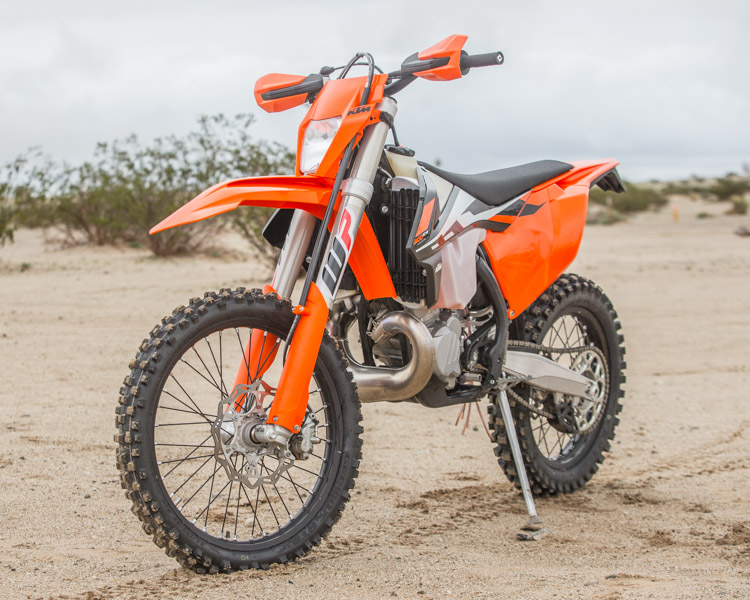
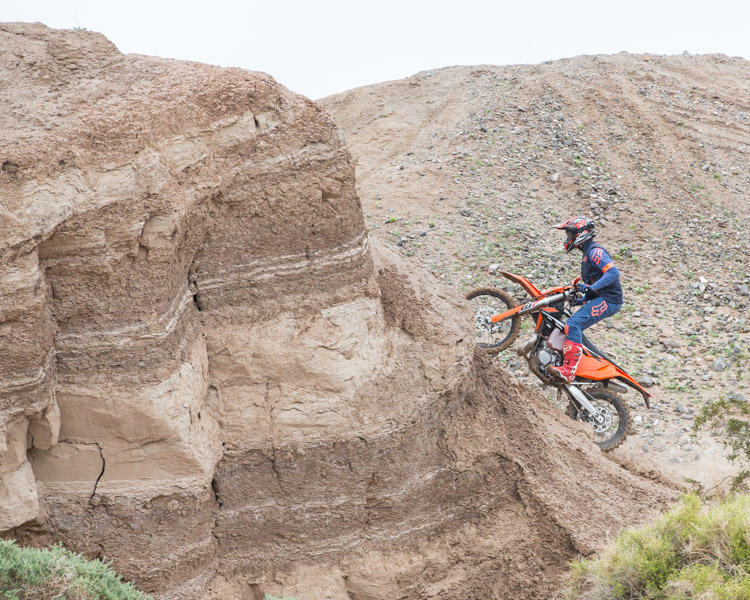
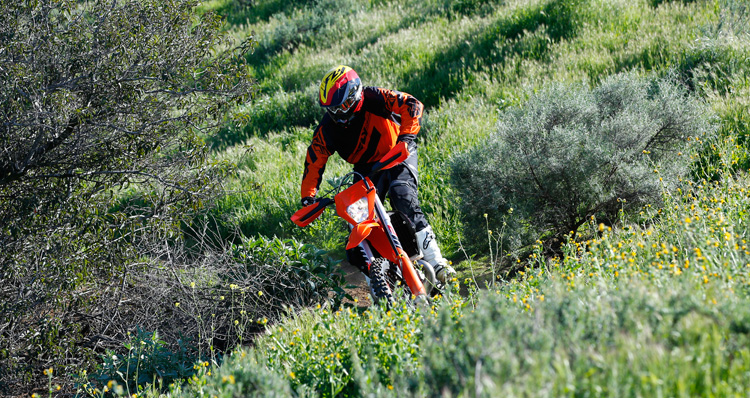
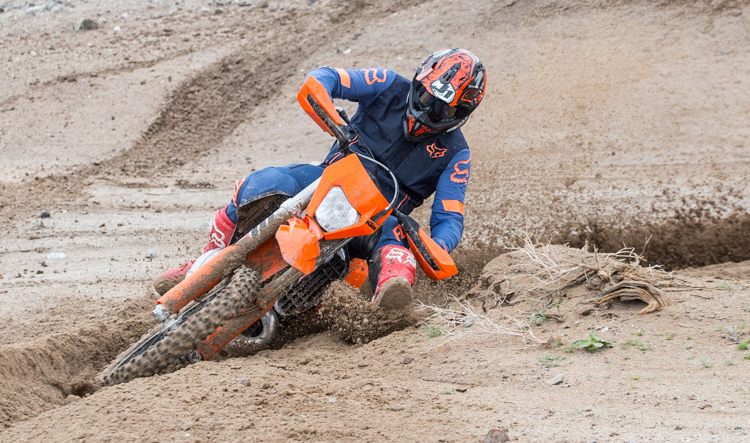
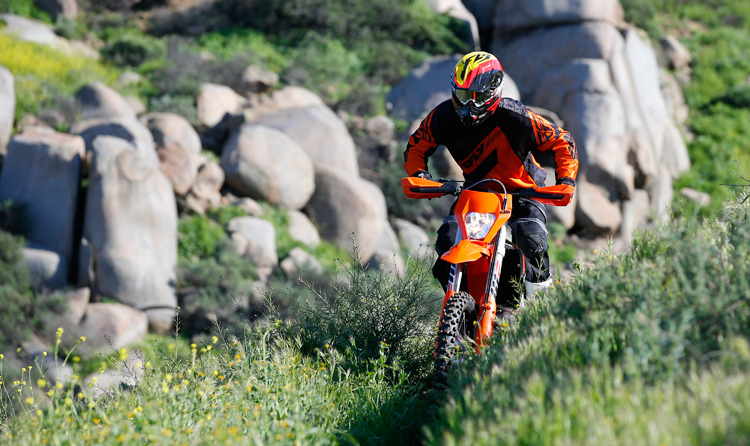
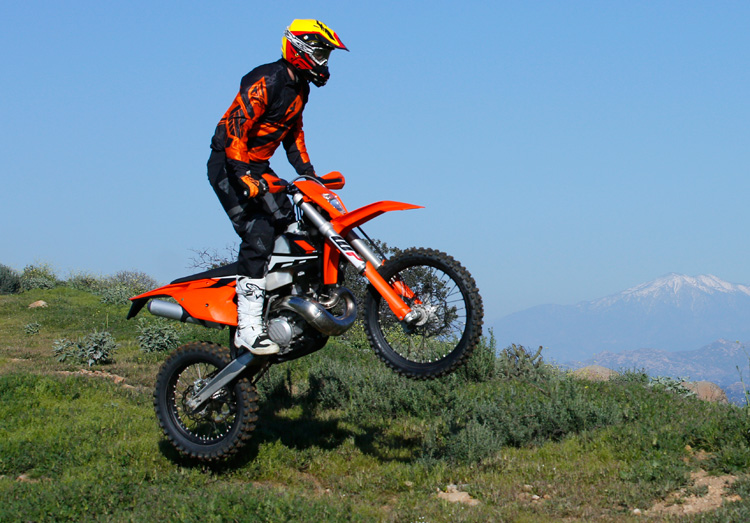


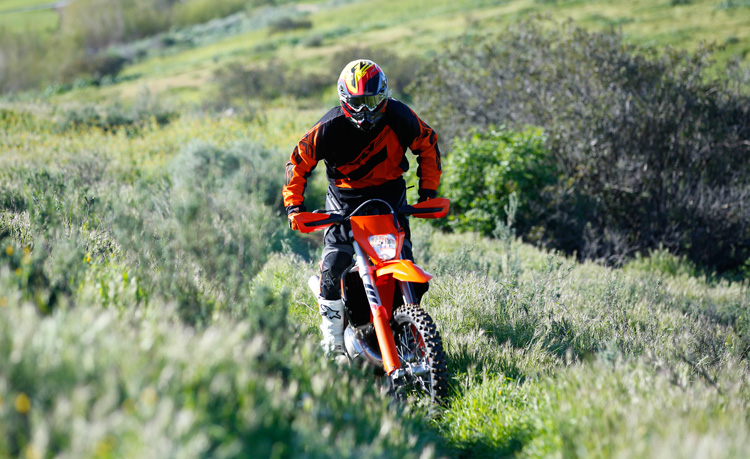
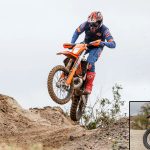
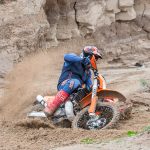
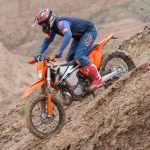
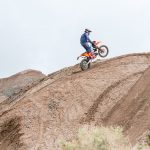
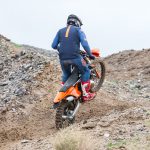
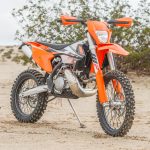
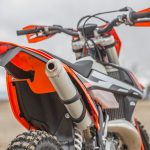

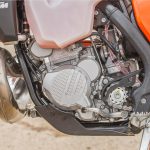
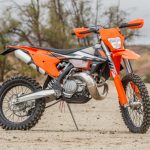
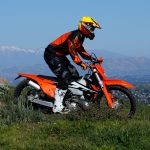
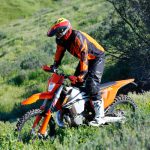


3 Responses to “2017 KTM 300 XC-W: My First Impression”
Ron
150xcw has lights and is not street legal.
Ron
“For 2017 the only XC-W’s in the American lineup are the 250 and 300 two-strokes.” There is also a 150XC-W
Jimmy Lewis
Not when you are as heavy as our author. Thanks for the catch.